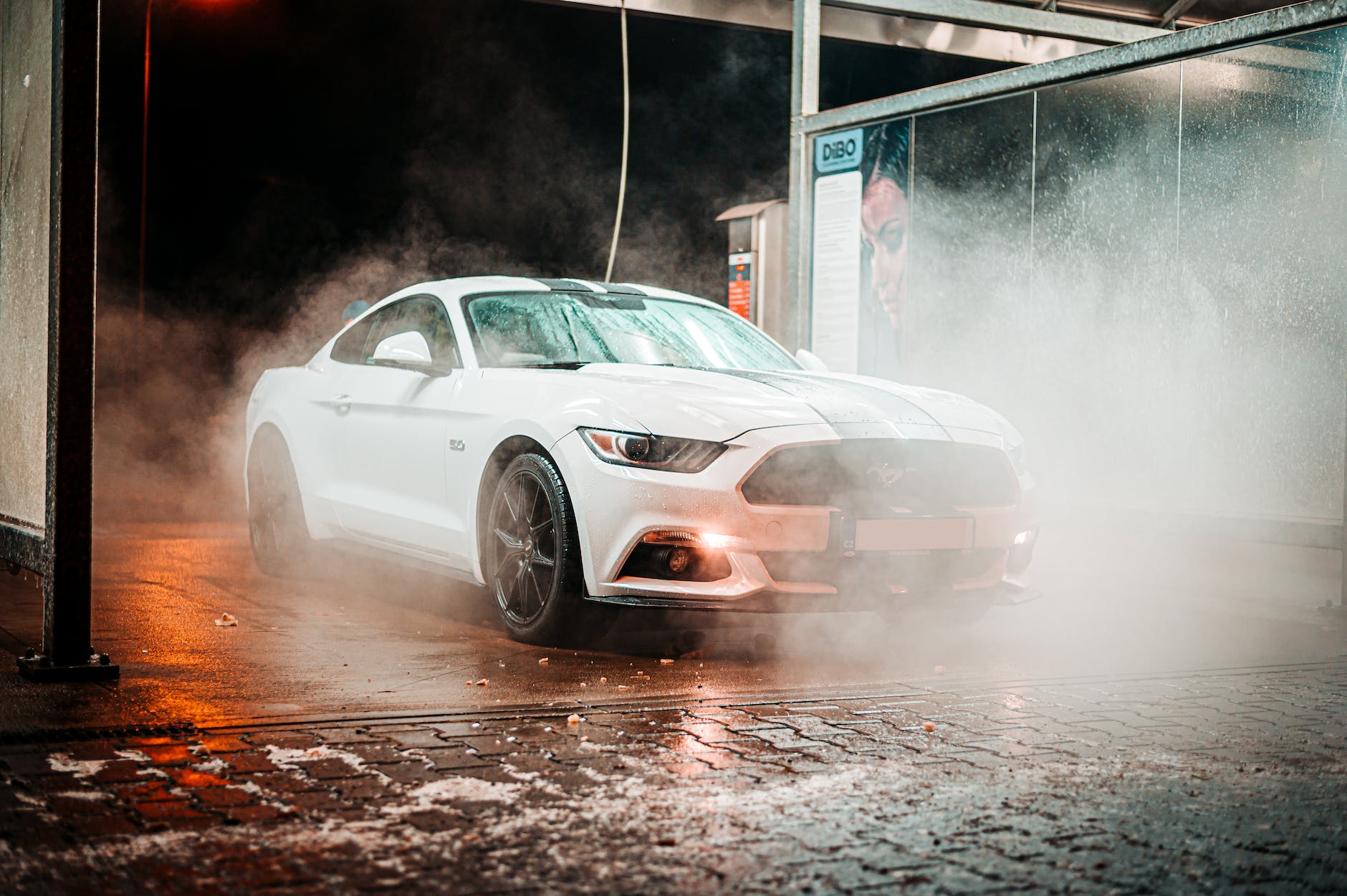
Driving in the Dark
Driving in the dark presents unique challenges that require heightened awareness and caution. Reduced visibility, glare from headlights, and the potential for fatigue make nighttime driving riskier compared to driving during daylight hours. To help ensure a safe journey, here are essential road safety tips for driving in the dark.
Prepare Your Vehicle
Before hitting the road at night, it’s crucial to prepare your vehicle for optimal visibility and safety. Follow this checklist to ensure your vehicle is ready for nighttime driving:
Headlights Alignment and Brightness:
Check and adjust your headlights to ensure they’re properly aligned and provide adequate brightness. Properly aligned headlights improve your ability to see the road ahead without blinding other drivers.
Exterior Lights Inspection:
Verify that all exterior lights, including headlights, taillights, and brake lights, are in proper working condition. Functional lights help ensure your vehicle is visible to others and reduce the risk of accidents.
Windshield and Mirrors Cleaning:
Clean your windshield, side windows, and mirrors to remove dirt, smudges, and debris that could obstruct your view. Clean glass surfaces minimize glare from headlights and improve overall visibility.
Use Proper Lighting Techniques
Proper lighting techniques not only improve your visibility but also contribute to overall road safety.
High Beams
One of the key aspects of using proper lighting techniques at night is knowing when to use high beams. You should use your high beams:
- On unlit roads or areas with minimal street lighting, where visibility is reduced.
- In rural areas, there are no oncoming vehicles or vehicles in front of you.
- When driving on highways or freeways with few or no other vehicles around.
- When you need to see farther down the road to identify potential hazards, like animals or obstacles.
However, it’s essential to switch to low beams when approaching other vehicles or when driving closely behind another vehicle. High beams can be blinding to drivers in front of you or the opposite lane, compromising their ability to see clearly and potentially causing accidents.
Low Beams
You should use your low beams when:
- Approaching or following other vehicles on the road.
- Driving on well-lit urban roads, especially with streetlights.
- Driving in heavy traffic conditions, where there are many other vehicles around.
- Driving in areas with oncoming traffic to prevent blinding other drivers.
- In adverse weather conditions like rain, fog, or snow, high beams can reflect off the particles in the air and create more glare.
Using your vehicle’s lighting effectively is essential for your safety and the safety of other road users.
Reduce Speed and Increase the Following Distance
Nighttime driving requires a more cautious approach due to reduced visibility. The Dallas car accident attorneys, MR Civil Justice, emphasize following another car too closely inhibits a driver from slowing down or stopping in order to avoid danger on the road or if traffic ahead comes to a halt, increasing the likelihood of an accident. To ensure a safe journey, it’s essential to:
- Drive at a moderate speed that allows you to react promptly to unexpected situations. The reduced visibility at night means that hazards can appear suddenly, necessitating adequate reaction time.
- Maintain a safe following distance between your vehicle and the one in front. This distance gives you extra time to react if the vehicle ahead suddenly stops or encounters an obstacle. Experts recommend at least a three-second following distance under normal conditions and even more at night.
By reducing speed and allowing for a sufficient following distance, you enhance your ability to respond effectively to any situation, minimizing the risk of collisions and ensuring a smoother and safer nighttime drive.
Stay Focused and Alert
Maintaining focus and alertness while driving at night is paramount for your safety and the safety of others on the road. The darkness can obscure potential hazards, making it essential to be fully engaged in the driving task. Avoid distractions that can divert your attention from the road, such as:
- Using your mobile phone
- Adjusting the radio
- Eating and drinking
Even momentary distractions can have serious consequences, particularly in low-light conditions where your reaction time is crucial.
Additionally, combatting driver fatigue is crucial during nighttime journeys. If you feel drowsy or fatigued, take breaks to rest and recharge. Fatigue impairs your reaction time and decision-making ability, significantly increasing the risk of accidents.
Manage Glare
Dealing with glare from oncoming headlights or streetlights is a crucial skill for safe nighttime driving. Managing glare effectively enhances your visibility and reduces the potential for accidents caused by impaired vision. Here are tips to help you manage glare:
- Dim your rearview mirror to its “night” setting to reduce glare from headlights behind you.
- When encountering oncoming traffic with high beams on, shift your gaze slightly to the right side of the road.
- If your vehicle is equipped with an anti-glare rearview mirror, it will automatically adjust to reduce glare.
- Regularly clean your windshield, side windows, and mirrors to maintain clear visibility.
- Use your sun visors, even at night, to shield your eyes from direct glare.
By applying these strategies to manage glare effectively, you ensure a more comfortable and safer driving experience in low-light conditions. Clear vision enhances your ability to react to potential hazards promptly, contributing to a smoother and more secure journey at night.
Be Cautious of Pedestrians and Cyclists
Driving in the dark introduces challenges for both motorists and vulnerable road users like pedestrians and cyclists. To ensure safety, be vigilant and considerate. Watch for pedestrians and cyclists, especially near intersections and residential areas, reducing speed and providing ample space when passing. Approach intersections with extra caution, looking for reflective clothing and lights.
Plan Your Route
Navigating unfamiliar roads at night can be challenging due to reduced visibility. Planning your route before you set out ensures a smoother and safer journey, allowing you to focus on the road rather than worrying about directions. Utilize navigation apps or GPS devices to guide you, stay aware of landmarks, and be prepared for unexpected detours. By planning, you can navigate with confidence, reducing stress and ensuring a safer nighttime driving experience.
Stay Sober
One should never drink and drive, especially at night when visibility is compromised. Staying sober is not only crucial for your safety but also for the well-being of all road users during nighttime journeys.
If you plan on drinking, it’s essential to prioritize safety and make responsible choices to ensure a safe journey for yourself and others. Here are some tips to keep in mind:
- Designate a sober driver as a designated driver (DD)
- Use rideshare services or public transport
- Stay overnight at a friend, hotel, or Airbnb
- Set a limit and stick to it
- Hydrate and eat before or while drinking
- Use a personal breathalyzer to estimate your blood alcohol concentration (BAC) before getting behind the wheel.
- Know your limits and be aware of how alcohol affects your body
If you’re unsure about your ability to drive safely after consuming alcohol, it’s always better to choose an alternative mode of transportation.
Conclusion
Driving in the dark requires extra vigilance and adherence to safety practices. By preparing your vehicle, using proper lighting techniques, reducing speed, staying focused, managing glare, and being cautious of pedestrians, you can significantly enhance your safety and that of others on the road. Following these road safety tips ensures a secure and smooth driving experience even during the darkest hours of the night. Remember, responsible driving practices contribute to a safer road environment for everyone.






